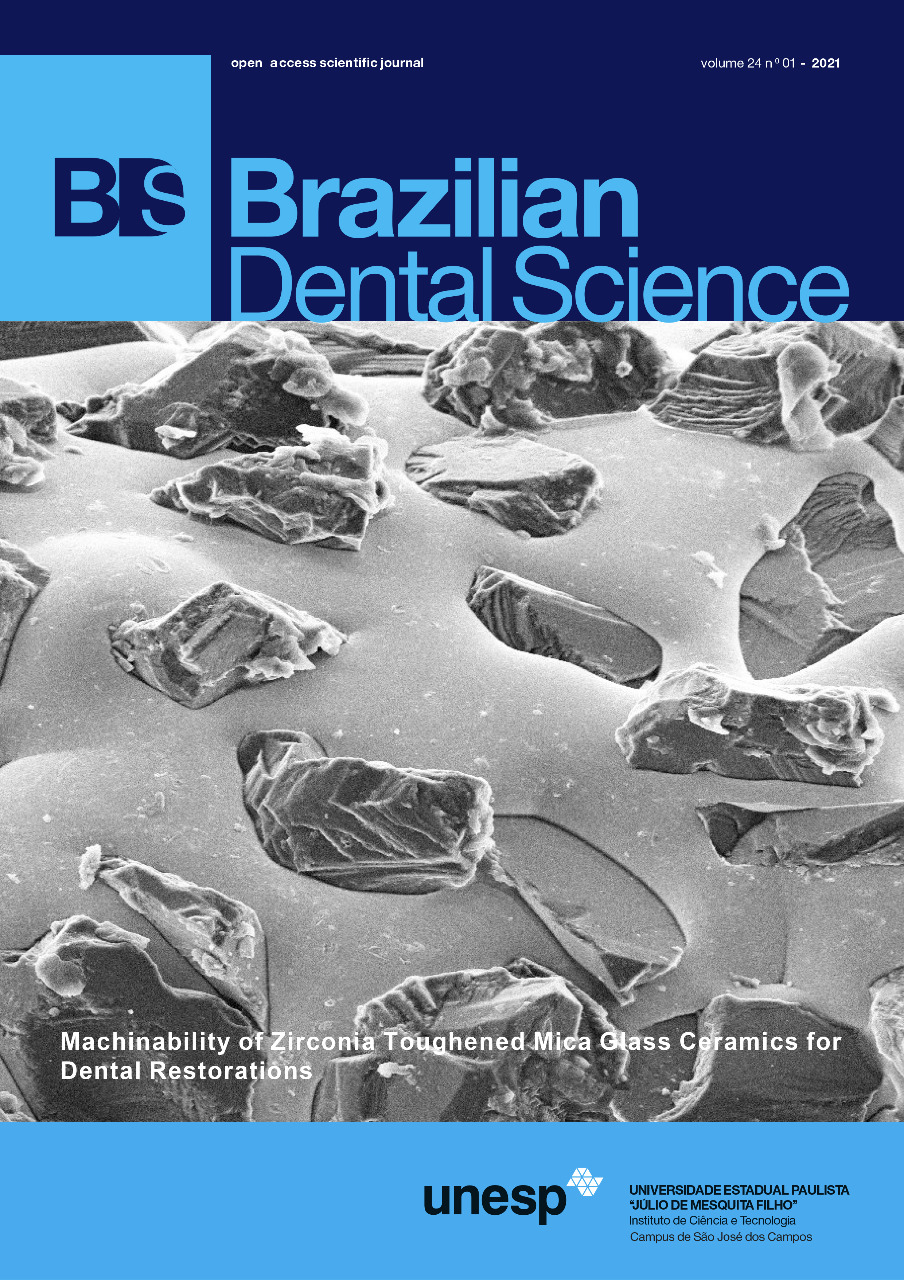Cytotoxic Effects of Bulk-Fill Composites on L929 Fibroblast Cells
DOI:
https://doi.org/10.14295/bds.2021.v24i1.2146Abstract
Objective: Unlike traditional composite resins, bulk-fill composite resins could be polymerized as thicker layers. This study aims to contribute to the field by investigating the cytotoxic effects of various bulk-fill composite resins on L929 mouse fibroblast cells in vitro. Material and Methods: In our study, six bulk fill and one conventional composite resin were used. Composite resin samples (8×4 mm) were prepared in a sterile cabinet by using a glass mod and polymerizing with a led light device (DTE LUX E, Germany). Composite samples (n:3) of which surface area was calculated according to ISO 10993-12: 2012 standards (3 cm2/ml), were kept in media for 24 h and 72 h in 37 oC incubator, their extracts were filtered in 1:1 and 1:2 proportion and were added on L929 mouse fibroblast cells. Cell viability was examined by the MTT assay and cell death by the LDH test. Cell viability results were evaluated using one-way analysis of variance (ANOVA) test (p<0.05). Results: When the 1:1 extracts from 4 mm thick bulk-fill composite samples were applied on L929 mouse fibroblast cells, cell viability rates showed significant differences compared to the control group at the end of 24 h and 72 h (except for Estelite Bulk Fill Flow). Although the extracts of the tested composite samples at 1:1 and 1:2 ratio at the end of 72 hours caused a decrease in L929 mouse fibroblast cell viability, the cell viability rate of only PRG-containing bulk fill composite and conventional composite remained below the cell viability ratio (70%) specified in ISO standards. Bulk fill composites did not produce toxic effects (except Beautifil Bulk Restorative) according to the LDH test. Conclusions: Despite decreasing in general the cell viability, bulk-fill composite resins used in 4 mm thick layers provided cell viability rates over the acceptability level, except PRG-containing bulk fill composite (Beautifil Bulk Restorative), which was cytotoxic to L929 mouse fibroblasts.
Keywords
Bulk fill composite; Cytotoxicity; L929 cells; LDH assay.
Downloads
Downloads
Published
Versions
- 2021-12-21 (2)
- 2020-12-22 (1)
How to Cite
Issue
Section
License
Brazilian Dental Science uses the Creative Commons (CC-BY 4.0) license, thus preserving the integrity of articles in an open access environment. The journal allows the author to retain publishing rights without restrictions.
=================




























